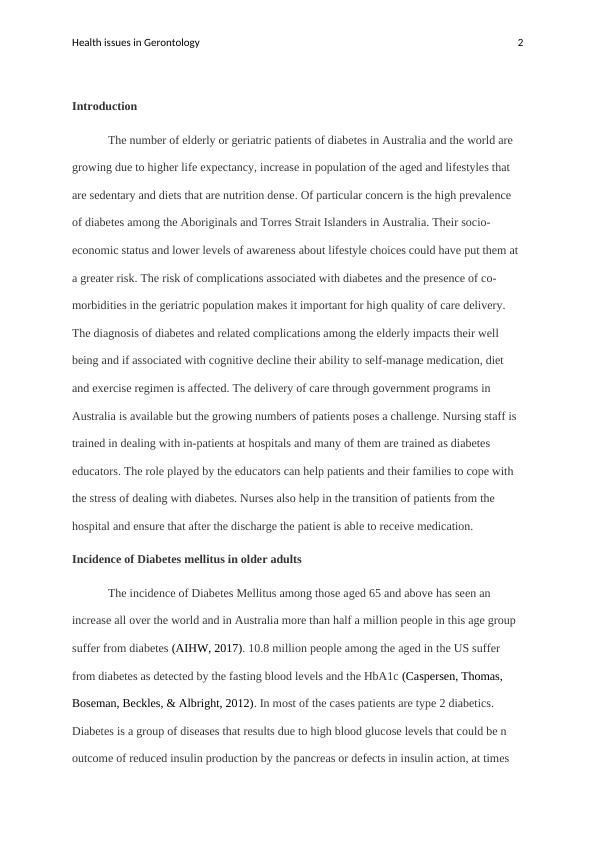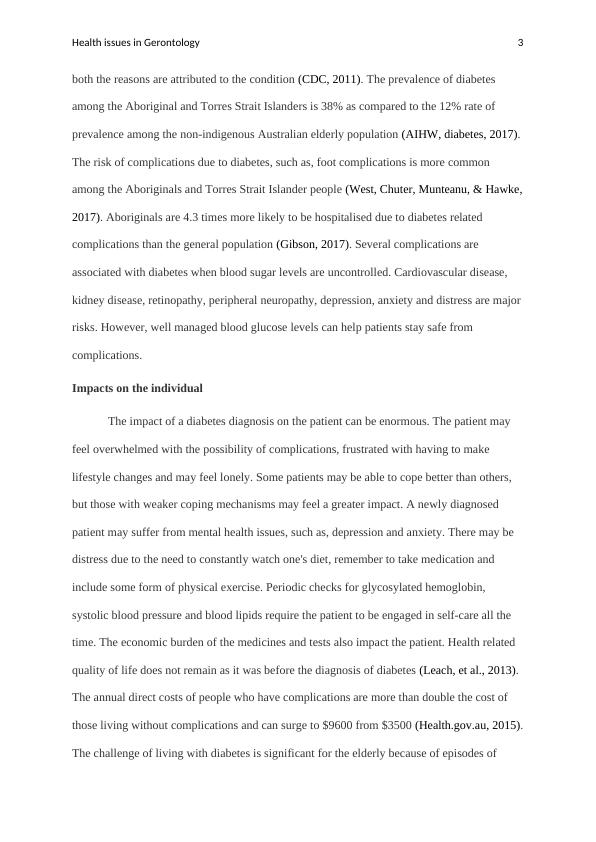Health issues in Gerontology
10 Pages3000 Words421 Views
Added on 2023-06-14
About This Document
This article discusses the growing incidence of diabetes among the elderly population, particularly among the Aboriginals and Torres Strait Islanders in Australia. It highlights the impact of diabetes on the individual's physical and mental health, and the economic burden on the healthcare system of Australia. The article also emphasizes the role of nurses in assessing and preventing diabetes among the elderly population.
Health issues in Gerontology
Added on 2023-06-14
ShareRelated Documents
End of preview
Want to access all the pages? Upload your documents or become a member.
Diabetes among Aboriginal and Torres Strait Islander people in Australia
|8
|2145
|210
Assignment on Fight Diabetes in your Community with NDSS
|8
|1646
|10
Epidemiology and Pathophysiology of Type 2 Diabetes
|12
|3164
|3
Type II Diabetes Mellitus
|10
|3015
|63
Diabetes among Aboriginal and Torres Strait Islander People in Australia
|8
|1661
|52
NUR344 Community Action Plan Template
|6
|1031
|19



